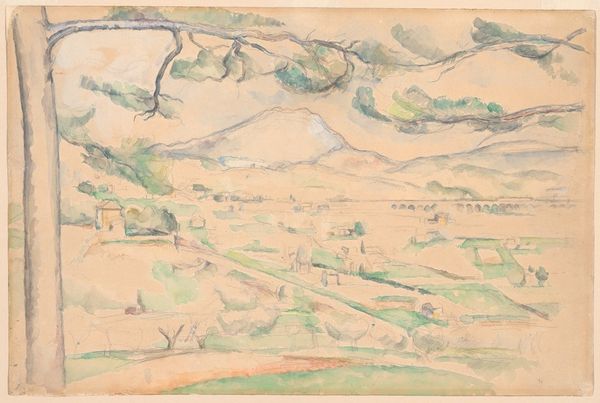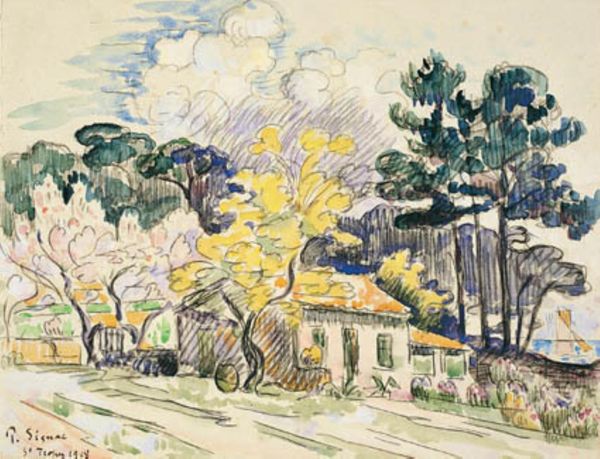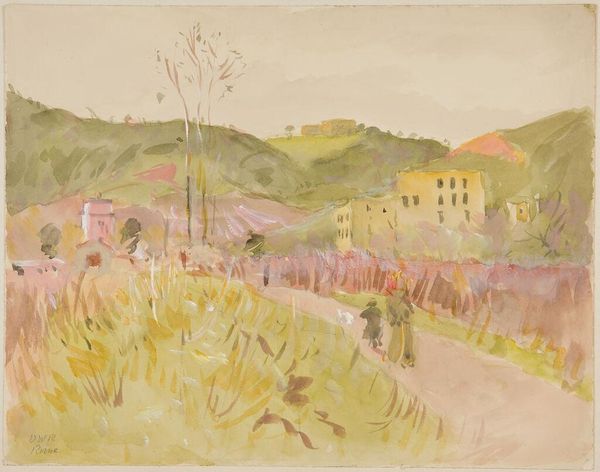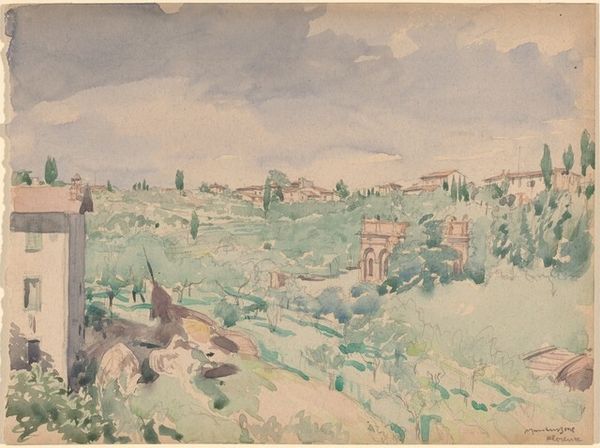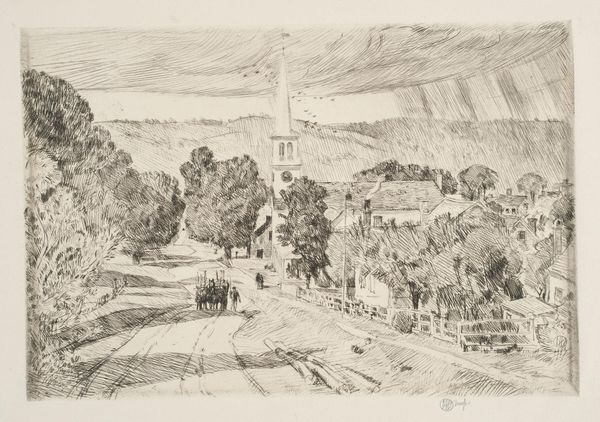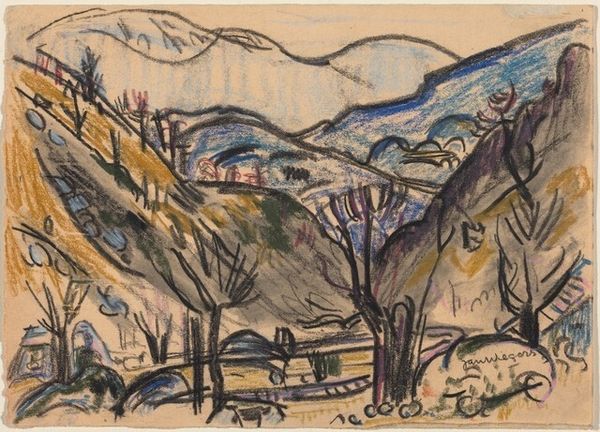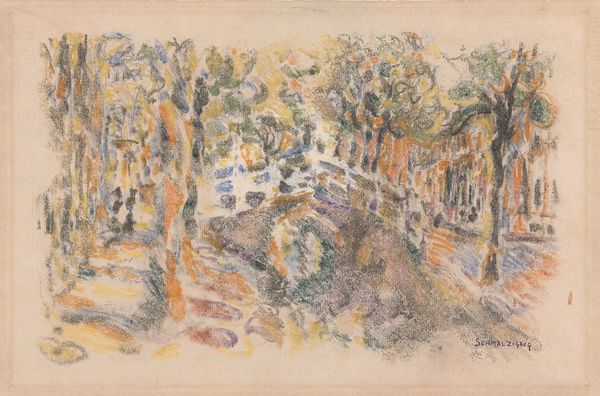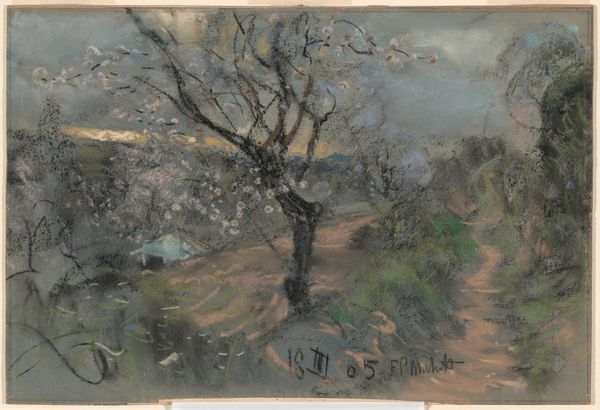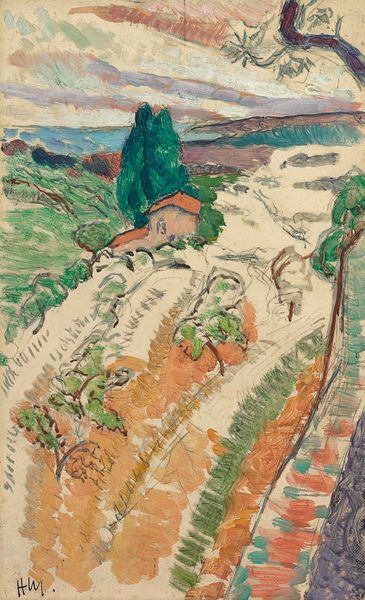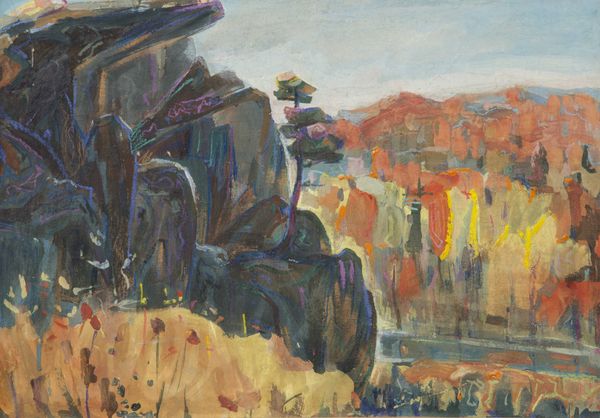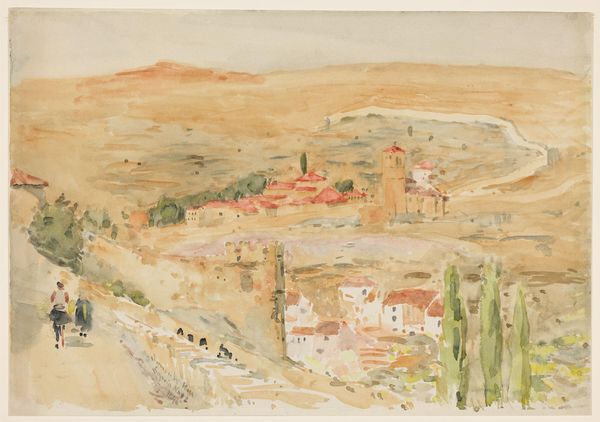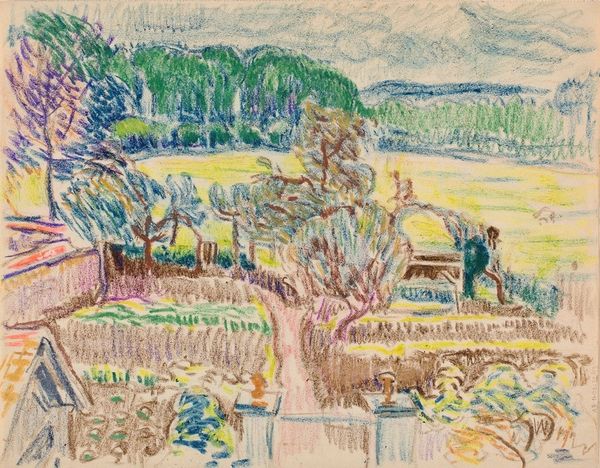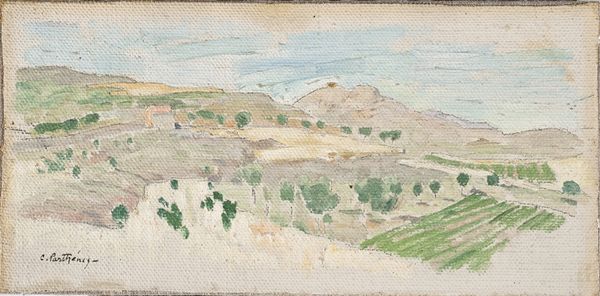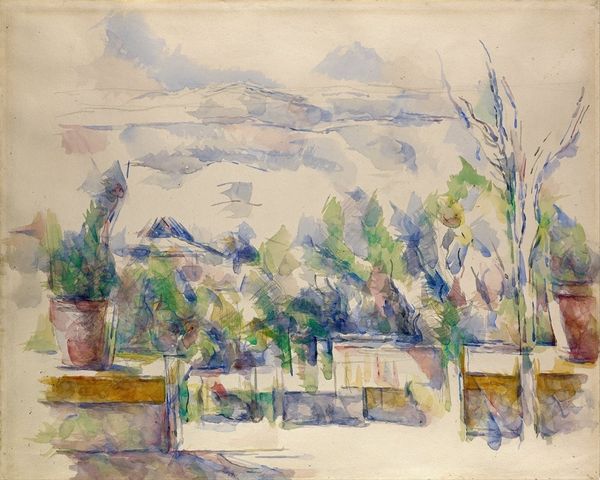
painting, watercolor
#
painting
#
impressionism
#
landscape
#
watercolor
#
post-impressionism
Copyright: Public Domain: Artvee
Paul Signac rendered Saint-Paul-de-Vence using watercolor and graphite on paper. Signac was a key figure in the Pointillist movement and was deeply engaged with representing social and political themes. Looking at this landscape, what we don’t see is as important as what we do. The absence of people prompts questions about labor, class, and the representation of rural life. Was Signac attempting to portray an idealized, depopulated landscape free from the realities of agricultural work and class struggle? Signac's work often reflected his anarchist leanings. He believed that art could contribute to social change. The idyllic representation of Saint-Paul-de-Vence might be seen as a utopian vision, a suggestion of an alternative to the harsh realities of industrial society. At the same time, we might ask, whose utopia is this? Ultimately, Saint-Paul-de-Vence invites us to reflect on the complex interplay between art, politics, and the representation of place, asking us to consider whose stories are told and whose are left out.
Comments
No comments
Be the first to comment and join the conversation on the ultimate creative platform.
